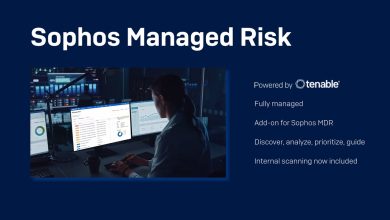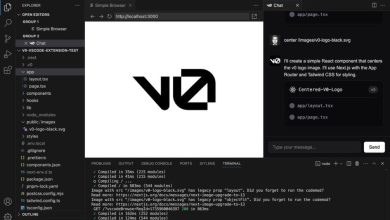ThreatLabz Report: Singapore Is Second Most Targeted APJ Nation for Mobile Malware Attacks in 2024
Annual ThreatLabz Report Highlights Mobile, IoT, and OT Cybersecurity Trends, Risks, and Prescriptive Zero Trust Defence Strategies

Zscaler, Inc., the leader in cloud security, has published its “Zscaler ThreatLabz 2024 Mobile, IoT, and OT Threat Report,” which offers an overview of the mobile and IoT/OT cyber threat landscape from June 2023 through May 2024. The findings in this report stress the urgency for organisations to reevaluate and secure mobile devices, IoT devices and OT systems. ThreatLabz identified more than 200 malicious apps in the Google Play Store, with more than 8 million collective installs globally, and the Zscaler cloud blocked 45% more IoT malware transactions than last year–indicative of botnets continuing to proliferate across IoT devices.
“Cybercriminals are increasingly targeting legacy exposed assets which often act as a beachhead to IoT & OT environments, resulting in data breaches and ransomware attacks,” said Deepen Desai, Chief Security Officer at Zscaler. “Mobile malware and AI driven vishing attacks adds to that list making it critical for CISOs and CIOs to prioritise an AI powered zero trust solution to shut down attack vectors of all kinds safeguarding against these attacks.”
Financially Motivated Mobile Attacks Remain a Top Threat Vector
The ThreatLabz report revealed that Singapore is the second most targeted nation by mobile malware in APJ. The top five targeted countries in APJ are:
- India
- Singapore
- Philippines
- Australia
- Indonesia
With a 77% rise in spyware year over year in the region, cyberattacks have never been more profitable for threat actors, either through monetary gain via direct extortion or passthrough use of stolen personally identifiable information (PII) and user credentials that can be sold and leveraged in future attacks.
Anatsa, a known Android banking malware that uses PDF and QR code readers to distribute malware, has targeted more than 650 financial institutions, and more specifically, users in Singapore, Germany, Spain, Finland, and South Korea.
ThreatLabz Finds Singapore as Second Most Impacted Country by IoT Attacks
With its central role in global communication and data processes, Singapore stands out as the second most impacted country by IoT attacks after the United States, accounting for 5.3% of all attacks globally. The top five countries that receive the most IoT traffic are:
- United States (81.3%)
- Singapore (5.3%)
- United Kingdom (2.8%)
- Germany (2.7%)
- Canada (2%)
ThreatLabz Identifies Verticals Most Targeted by Bad Actors
Globally, the technology (18%), education (18%) and manufacturing (14%) sectors are the most frequent targets of mobile malware. Education in particular saw a dramatic 136% increase in blocked transactions compared to the previous year.
Additionally, for the second year in a row, manufacturing experienced the highest volume of IoT malware attacks, accounting for 36% of all IoT malware blocks observed on the Zscaler Zero Trust Exchange™ platform. When analysing unique devices across different verticals, this sector stands out with the highest implementation of IoT devices due to its extensive use of IoT applications, ranging from automation and process monitoring to supply chain management.
Legacy and End-of-Life Operation Systems Leave OT Systems Vulnerable
Once air-gapped and isolated from the internet, OT and cyber-physical systems have rapidly become integrated into enterprise networks, enabling threats to proliferate. OT deployments can involve thousands of connected devices spread across dozens of sites, creating a substantial attack surface for external threats, such as those that exploit known zero-day vulnerabilities.
Additionally, this also creates a large attack surface between internal (east-west) OT traffic, increasing the risk of lateral movement and the potential blast radius of a successful attack.
How to Secure Mobile, IoT, and OT
With today’s hybrid-work environments, users can work from anywhere with internet access, SaaS apps and private applications, whether in the cloud or the data centre. To enable secure hybrid work and provide seamless access to any application, enterprises need to retire network-centric approaches, which hamper productivity and leave them vulnerable to lateral movement. Instead, organisations must adopt a zero trust architecture that enables secure remote access from any user device to any application, from any location.
Zscaler for IoT and OT enables enterprises to reduce cyber risk while embracing IoT and OT connectivity to drive business agility and increase productivity. Powered by the Zero Trust Exchange, these capabilities protect IoT devices against compromise and prevent lateral movement with device segmentation and deception—all while allowing for remote access to OT systems without risky VPN connectivity.
The findings of the ThreatLabz 2024 Mobile, IoT, and OT Threat Report stress the need for organisations to better secure their mobile endpoints, IoT devices, and OT systems.
ThreatLabz Research Methodology
The Zscaler ThreatLabz team analysed a data set collected from the Zscaler Security Cloud between June 2023 and May 2024, comprising more than 20 billion threat-related mobile transactions and associated cyberthreats.




